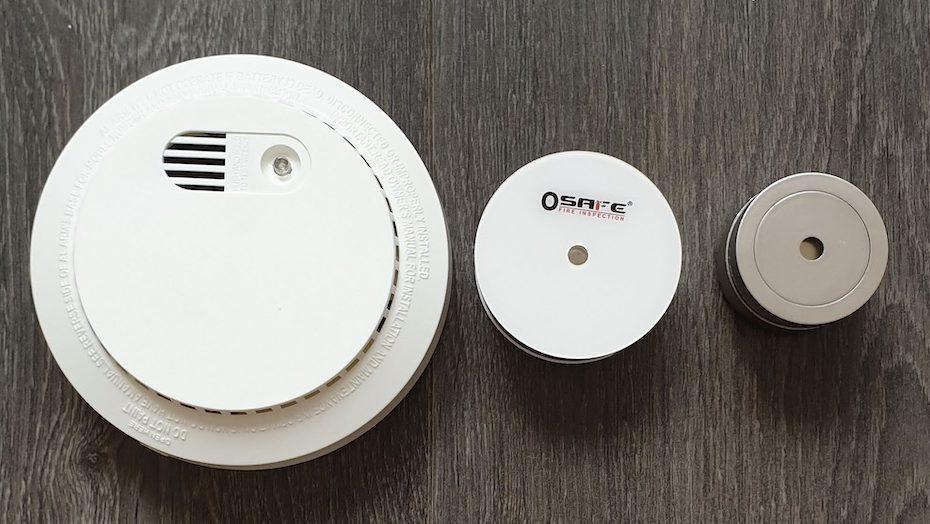The 2 broad types of smoke detectors are that of photoelectric and ionization. There are plenty of information online about how these 2 types of smoke detector work, so we will briefly introduce the mechanics and not go deep. What you should know are the pros and cons of these 2 types of smoke detectors.
Photoelectric Smoke Detector (quoted from Wikipedia)
A photoelectric smoke detector contains a source of infrared, visible, or ultraviolet light, a lens, and a photoelectric receiver. In some types, the light emitted by the light source passes through the air being tested and reaches the photosensor. The received light intensity will be reduced due to scattering from particles of smoke, air-borne dust, or other substances; the circuitry detects the light intensity and generates an alarm if it is below a specified threshold, potentially due to smoke. Such detectors are also known as optical detectors.
In other types, typically chamber types, the light is not directed at the sensor, which is not illuminated in the absence of particles. If the air in the chamber contains particles (smoke or dust), the light is scattered and some of it reaches the sensor, triggering the alarm.
Click here to find out how a typical photoelectric smoke detector works in detail.
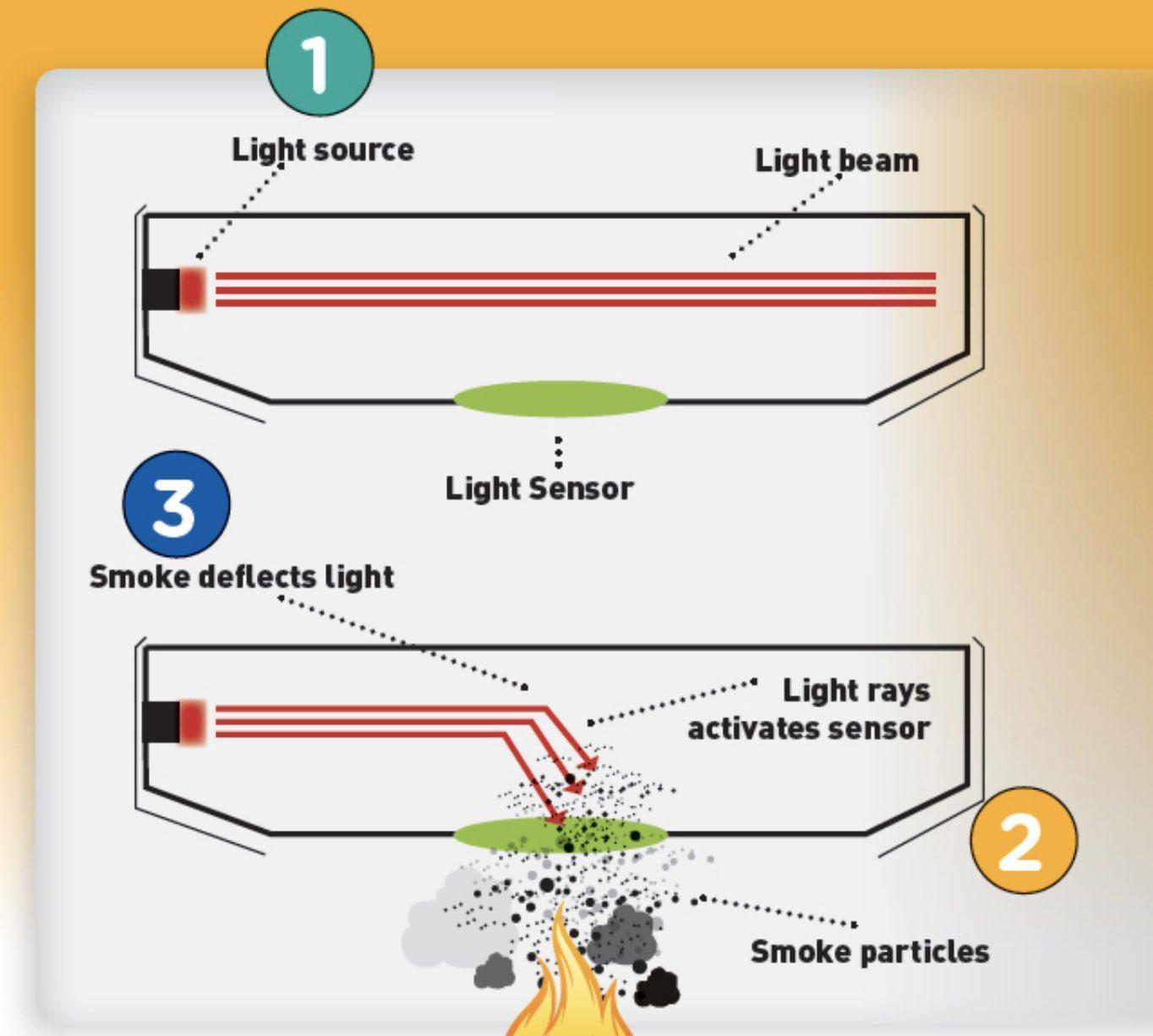
Source: NFPA Photoelectric Smoke Detector
Ionization Smoke Detector (quoted from Wikipedia)
An ionization smoke detector uses a radioisotope to ionize air. If any smoke particles enter the open chamber, some of the ions will attach to the particles and not be available to carry the current in that chamber. An electronic circuit detects that a current difference has developed between the open and sealed chambers, and sounds the alarm.
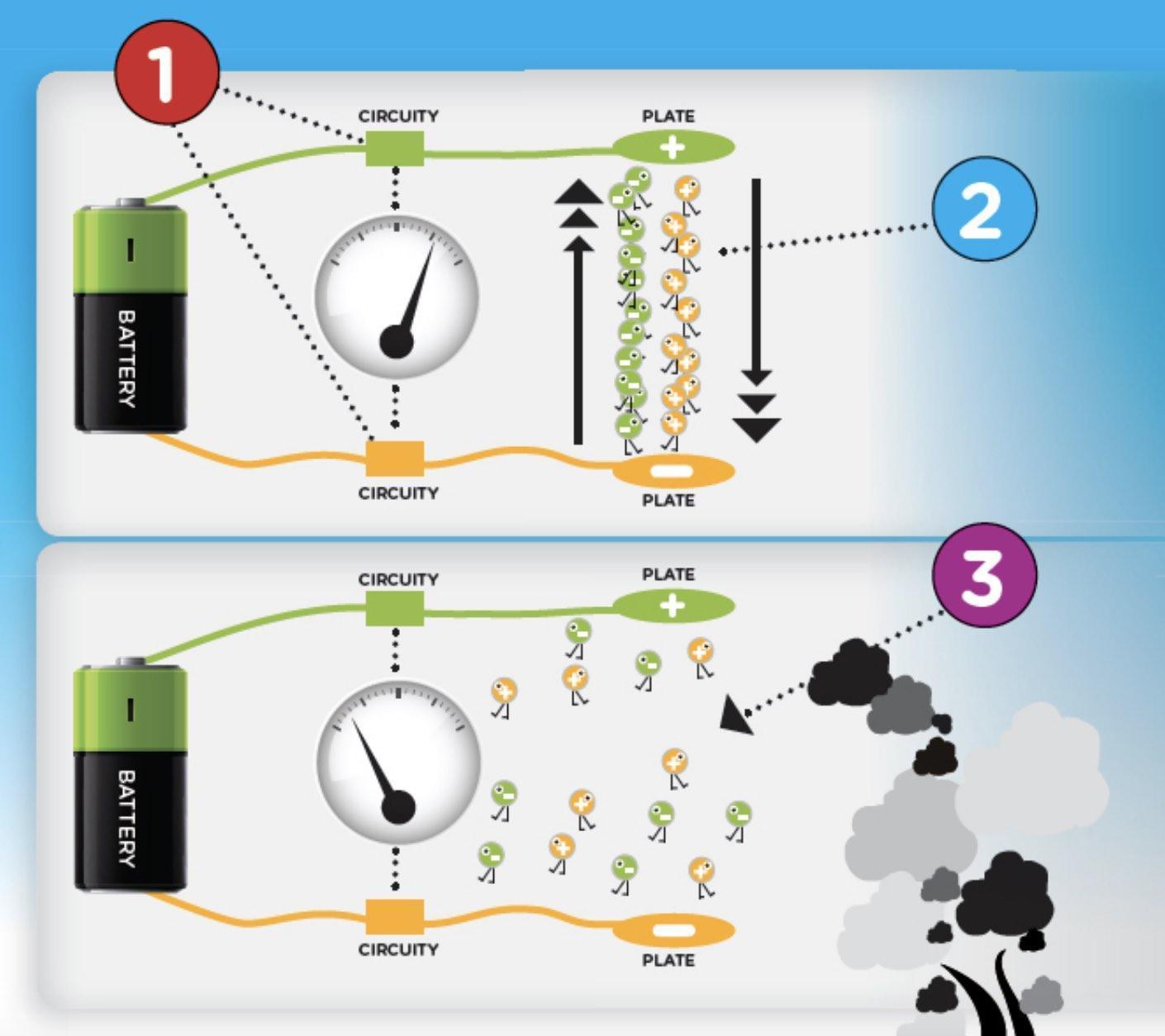
Source: NFPA Ionization Smoke Detector
Other Non-Smoke Detectors
There are also other types of (non-smoke) detectors:
- Carbon Monoxide
- Carbon Dioxide
- Heat
We will not discuss these other types of detectors as they are less common and less relevant in our context.
Differences Between Photoelectric And Ionization Smoke Detectors
- Photoelectric smoke detectors respond many times faster to fire in its early, smouldering stage (before it breaks into flame) than that of ionization smoke detector.
- Ionization smoke detectors respond slightly faster to fast flaming fires than photoelectric smoke detector.
- Under UL test conditions, ionization detectors consistently respond about 30 to 90 seconds faster to open or “fast-flame” fires than photoelectric smoke detectors. However, ionization detectors respond on average between 15 to 50 minutes slower in a smoldering fire than photoelectric detectors.
- With the exception of kitchen where grease/oil fires are a possibility, most residential fires started from smouldering fires. Think overloaded power supplies, cigarettes on sofa, overcharged electronics etc where you will see dense smoke being produced before breaking into flames.
- The vast majority of residential fire fatalities are due to smoke inhalation, not the actual flames. Nearly 2/3’s of fire fatalities occur at night while you sleep. A smoke detector that detects smoke quicker gives residents a much higher chance of escape.
- Today, all furnishings and a large percentage of the building materials are synthetic materials which burn significantly faster than natural materials. In tests, a room with furniture built from natural material took 29 minutes to be decimated by fire while a room with furniture built from synthetic material took only 3 minutes and 30 seconds to be completely decimated by fire. Early detection gives your precious minutes to escape to safety.
- Ionization are more prone to false alarms due to their mechanics and as a result more likely to be intentionally disabled.
What Type Of Smoke Detector Is Most Suitable For Our Home?
In Singapore’s context, photoelectric (also known as optical) smoke detector is more suitable for our homes, mainly because most of our residential fires are caused by devices or of electricity origin. Such fires typically produce a lot of smoke in its initial phase before it flashes over to an open fire (smouldering fire). To recap, photoelectric smoke detectors are more effective in detecting smouldering fires.
photoelectric smoke detectors are more effective in detecting smouldering fires
Watch the video on the much-delayed response time of ionization smoke detectors in the case of smouldering fire.
How About The Hybrid Type With Both Photoelectric and Ionization Sensors?
Such hybrid smoke detectors seem to have a worser performance in tests. The main reason being the design approaches:
- Both photoelectric and ionization sensors must detect smoke to sound off the alarm. As a result, the smoke detector may never sound off. This is very dangerous if the fire happens at night where the family is fast asleep. The family may not have a chance to escape at all.
- Either photoelectric or ionization sensors must detect smoke to sound off the alarm. This is a better design than the previous one. But you are paying more to include the ionization sensor. Yet, ionization sensor is not effective in detecting smouldering fires. Furthermore, the ionization sensor is still susceptible to false alarms. They often reduce sensitivity of the ionization sensor to reduce false alarms.
Above are extracts from an article titled “Silent Alarms; Deadly Differences”, published by Skip Walker, an ICC Certified Combination Residential Building Inspector, an ICC Certified California Combination Residential Building Inspector, a CREIA Master Inspector (MCI), an ASHI Certified Inspector (ACI), and a FIRE Certified Fireplace Inspector.
For the interested, you can click on this link to see his extensive deck on the comparison between photoelectric smoke detector and ionization smoke detector.
Blaze Guard’s Photoelectric Smoke Detectors
-
Product on sale
 Nano Smoke Detector (SCDF Approved)Original price was: $69.90.$44.90Current price is: $44.90.
Nano Smoke Detector (SCDF Approved)Original price was: $69.90.$44.90Current price is: $44.90. -
Product on sale
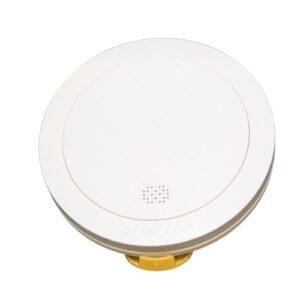 SD01 Interlinked Smoke Alarm (SCDF Approved)Original price was: $118.00.$88.00Current price is: $88.00.
SD01 Interlinked Smoke Alarm (SCDF Approved)Original price was: $118.00.$88.00Current price is: $88.00. -
Product on sale
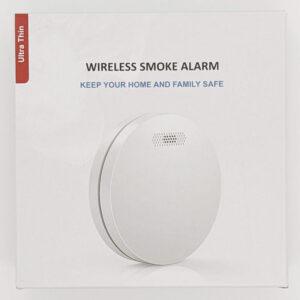 SM11W Wifi Smoke AlarmOriginal price was: $89.90.$49.90Current price is: $49.90.
SM11W Wifi Smoke AlarmOriginal price was: $89.90.$49.90Current price is: $49.90.
